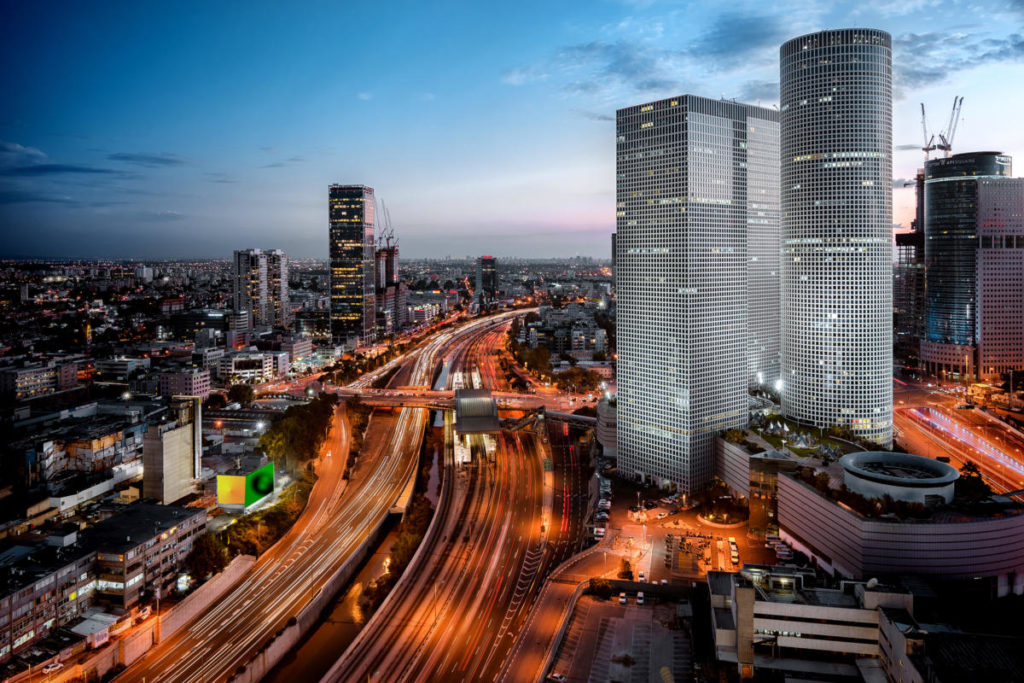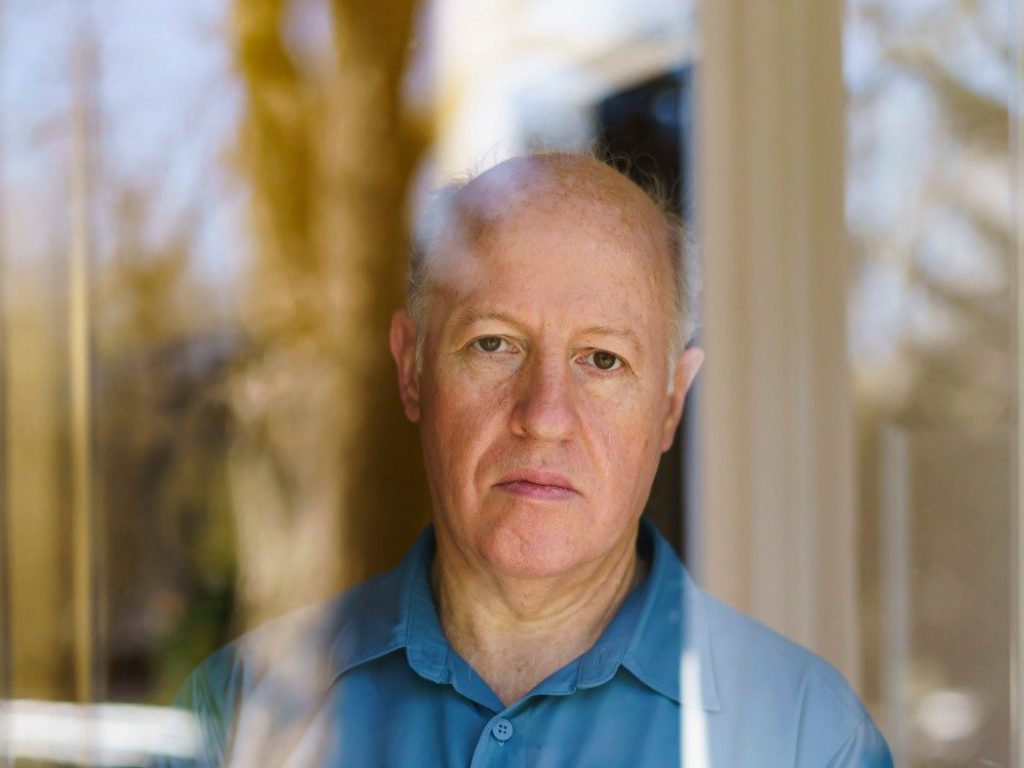1 | does the source speak the language?
Americans would never accept as an expert on America someone who doesn’t speak English. If someone can’t read a U.S. newspaper or speak to an American in her language, no one would take the person seriously about American society or politics. But many or most of the people explaining foreign societies to Westerners are that person. That includes most of the correspondents and NGO staffers in Israel, which is the social bubble producing much of the information in the press. Observers, commentators, and activists who don’t have a deep understanding of the place they’re in will cling to preexisting narratives and copy their colleagues. This is why reporters often not only get things wrong but get them wrong in the same way.
Observers, commentators, and activists who don’t have a deep understanding of the place they’re in will cling to preexisting narratives and copy their colleagues.
So one easy way to vet purported expertise about Israeli politics and society — from a speaker, a newspaper article, a professor, anyone — is to ask whether the person speaks and reads Hebrew. This is a good rule not just about Israel. One of my favorite quotes is from the Korea expert B.R. Myers, who once wrote in The Atlantic, while passing judgment on a few silly books about North Korea, “The question of where Europe ends and Asia begins has troubled many people over the years, but here’s a rule of thumb: If someone can pose as an expert on the country in question without knowledge of the relevant language, it’s part of Asia.”
This is a good rule (and it also clears up some uncertainty about which continent Israel is on).
2 | why are you telling me this?
Is your source of information an observer whose job is to explain things, or an activist with a political plan? Being an activist is fine, but it’s important to understand who’s who. An activist doesn’t need to tell you everything, just the things that will draw you to his point of view. To take examples from the Israeli context, groups such as Breaking the Silence or B’Tselem are activist groups, and so, on the other side of the spectrum, are groups like StandWithUs. Their material isn’t meant primarily to explain what’s going on, but to induce you to support a particular position. Contradictory information won’t be included. Their role is like that of an attorney at a divorce trial: If you’re representing the wife, your job isn’t to offer a fair assessment of the husband. Your job is to savage his character in your client’s interest and to get the judge on your side.
You’ll find that most criticism of Israel doesn’t compare it with anything. That’s a sign the discussion isn’t about a real country.
What makes sorting journalists from activists more and more difficult is that many journalists have become activists — that is, they see their job not as helping you understand events, but as pushing you toward their conclusions. They engineer their reporting to that end. Many Western reporters here in Israel, supported by the world of activist NGOs and international organizations (which is the same social and professional world inhabited by reporters, with much movement between them), believe that Israel is the problem.
It follows, if you’re an activist, that what’s needed is not an understanding of Israel’s concerns, but a character assassination that will stoke anger and punish the guilty party. The goal is less to inform than to enrage. That’s why bloodshed during a Hamas attempt to penetrate the Gaza border (to cite one example from 2018) isn’t described as the result of actions, however imperfectly pursued, by Israeli soldiers to protect their citizens. Such a description would be true, but as activism it’s ineffective. Instead, the event must be presented as a kind of murder, even a massacre.
As soon as the press becomes activist, it becomes impossible to understand what’s going on. Anyone hoping to understand should be looking for knowledgeable observers capable of understanding different points of view.
3 | are you sufficiently suspicious of shocking images and details?
We’re all bombarded with photos and 17-second videos, not just from Israel. But the camera saturation here and the press-savvy nature of the players tend to mean that this place produces more than its fair share of troubling images. It shouldn’t need pointing out in 2021, but photos and videos don’t always show what they purport to show. Even if they’re true, they’re often not the whole truth, and even if they’re the whole truth, they often say nothing about the broader context in which they occur.
For example, during the American advance from Normandy into occupied Europe at the end of WWII, U.S. troops committed war crimes, such as the murder of German prisoners. Videos of this, should any have surfaced, would have been shocking. But they would say nothing about the wisdom or justice of the Normandy invasion, let alone about the American cause in that war. If your understanding of a situation is driven primarily by shocking details or images, you’re likely to get things wrong.
4 | what are other countries up to?
The world is broken, and countries in the world are thus sullied, at least to some extent. Israel is a country in the world, so discussions of Israel must compare it with other countries in similar situations and not to abstract ideals like “democracy,” or (as I sometimes see Jewish people doing) to “Judaism,” or to the social-action committee at their synagogue. If someone is claiming that casualties in an Israeli operation in Gaza are “high,” for example, as reporters frequently do, that needs to be compared with similar operations, like the Marines in Fallujah, or the British in Northern Ireland, or the French in Mali. If you’re critical of open-fire orders on the Gaza fence, you should know how that works on the India-Pakistan border, or the Turkey-Syria border, or on the perimeters of U.S. military bases in Afghanistan. Same goes for refugee absorption, press freedom, minority rights, or anything. Israel doesn’t always come out looking great. But you’ll find that most criticism of Israel doesn’t compare it with anything. That’s a sign the discussion isn’t about a real country.
When I have spoken to groups of Americans and been asked about Israeli soldiers killing civilians, which is one of the themes of mainstream press coverage these days, I sometimes ask whether anyone knows how many civilians the U.S. military has killed in the past year. I’ve asked hundreds of people at this point, most of them educated and politically aware, and I have yet to meet a single person who can give me even a ballpark number offhand. (The Pentagon’s official number for 2019, for example, was 132, but the UN put the number in Afghanistan alone at 559.) If someone is going to criticize Israel’s behavior in the world, it’s important to understand what the world is, and how other countries behave in it. A few comparisons of this kind go a long way toward turning a symbolic discussion into a sane one.
5 | is the scope rational?
Israel is 0.01 percent of the world’s surface and 0.2 percent of the landmass of the Arab world. The population is roughly the same as New York City’s. The death toll in the conflict here last year (2020) among Israelis and Palestinians, combatants and civilians, was about 30, nearly all of them Palestinians. That’s an awful number, and some instances were tragic mistakes for which Israelis are responsible. Thirty is also less than one-sixth the number of people (202) murdered in the same period in New Orleans, a place that gets little attention from reporters in America, let alone the rest of the world.
When I was an AP reporter in Jerusalem between 2006 and 2011, the American news giant had more staff covering this story (involving about 14 million people, Israelis and Palestinians) than it had covering China or India, each with a population of over a billion. That focus, which was standard for the press from North America and Western Europe, is a good sign that the people telling Israel’s story are not attempting a rational analysis of the world but are engaged in something else. In my opinion, this “something else” is a symbolic story in which Jews are used, often subconsciously, to illustrate the problems that preoccupy the storytellers in their own societies. One good way to differentiate a symbolic story like that from a factual analysis is to ask: Does the story make the scope of the problem clear?
An anti-Jewish narrative isn’t always constructed by invention. Sometimes it’s done by inflation and the omission of context.
An anti-Jewish narrative isn’t always constructed by invention. Sometimes it’s done by inflation and the omission of context. For example, someone who wants to illustrate the ills of capitalism by using nefarious Jewish bankers can do so without lying. There really are nefarious Jewish bankers. All you need to do is omit the fact that most Jewish bankers aren’t nefarious, that Jews aren’t more nefarious than other bankers, and that most bankers aren’t Jewish. The same goes for the stories about Jewish Bolsheviks that were once current among anti-Communists.
The negative Israel story that’s spreading among Western liberals does something similar — it tears Israel from its context and inflates it, turning it from a real place into a symbol of what’s wrong in the world. This is when a factual analysis starts to resemble older, familiar stories, with older and familiar effects, like calls for Jews to be boycotted until they conform to a subjective and unique list of demands, or until they disappear. That has happened repeatedly in the past, and it’s happening now. When a story starts having that effect, a reader should respond not by asking what she can do to reform the purported behavior of the Jews, but by asking who’s telling this story, and why.
6 | is the regional context clear?
To envision regional context, an example I like to use is the America–Italy war of 1944. The U.S. military was indeed fighting in Italy in 1944, but have you ever heard of that war? Probably not, because it’s called the Second World War. Anyone knows that understanding the America–Italy component of the war requires understanding Pearl Harbor and Poland and a global conflict in which most participants weren’t American or Italian.
Have you heard of the “Israeli–Palestinian conflict”? You probably have, even though most of Israel’s wars haven’t been against Palestinians (but rather Egyptians, Jordanians, Iraqis, Lebanese, and others) and even though Israel’s key opponent at the moment is the theocratic regime in Iran, a country that is neither Palestinian nor Arab. The “Israeli–Palestinian” story is a simplified framing that crops out most of the actual conflict. Reporters like simple framing tricks in part because our tools are so scant — a few hundred words in a news story, 90 seconds in a TV segment, 280 characters in a tweet. The complexities of the real world just don’t fit. What’s needed is one good guy and one bad guy: Palestinian vs. Israeli.
If you see only an ‘Israeli–Palestinian’ conflict, Israel’s decisions won’t make sense.
If you see only an “Israeli–Palestinian” conflict, Israel’s decisions won’t make sense. In the Western mind, for example, the West Bank and Syria are two completely separate stories. In the real world, they are so close that the drive between them takes the same time as a subway ride across New York City. If you don’t understand that context, it’s hard to understand why many sane Israelis are afraid that a power vacuum in the West Bank might not become a “Palestinian state,” as the press story assumes, but might actually become like Syria, where a civil war just killed 500,000 people.
The Arab world numbers about 330 million people, a tiny portion of whom are Palestinian. The Arab minority under Israeli control, the Palestinians, are part of the regional majority. The broader Islamic world is (depending on whom you ask) about 1.5 billion people. There are 6 million Jews in Israel. The entire Jewish population on Earth, about 13 million, is a lot smaller than the population of Cairo.
The context doesn’t mean that all of Israel’s decisions are right — just that they’re being driven by factors that many people miss. With the addition of regional context, many of the problems with the story are solved, and the discussion of Israel is likelier to be sane.
7 | is the chronology straight?
The stories told about Israel often start in 1967. This is done to set up the military occupation of the Palestinians, which began that year, as the cause of the conflict, and to suggest that a solution to that problem would bring peace. This, in turn, makes it seem like the problem is one Israel could solve if it wanted to, which sets up the Jews as villains, rather than as people caught up in a complex situation where everyone has made mistakes and no one really knows what to do.
The conflict began decades before 1967. The Palestine Liberation Organization was founded in 1964, before the West Bank or Gaza came under Israeli control. The military occupation in the West Bank is one symptom of the conflict, not the cause. Many Israelis (including this one) argue that we’ve done a poor job of treating this symptom. Very few believe that healing the symptom would solve the problem, which is objectively older and broader than the symptom. Understanding the simple progression of events makes things much clearer.
8 | what else is going on?
In discussions of an urgent American problem such as gun violence, Americans understand the issue as one aspect of life in their country, part of a complicated mosaic of factors that constitute the existence of the United States. But when reading press reports about foreign countries, single topics become isolated for Westerners as “the story.” A good example is cartel violence in Mexico or the figure of Vladimir Putin in Russia. These are important stories, but if you’re in Mexico or Russia, you understand that there is much else going on.
So when presented with a portrait of Israel, a good question to ask is whether it’s a complete picture of an actual country. Most Western press coverage is concerned with the military occupation in the West Bank, particularly the settlements, and with Israel’s conflict with the Palestinians. This is an important issue for Israelis, but one that exists in the broader context of the life and security of the country, where 9 million Jewish and Arab citizens enjoy a level of stability unavailable anywhere else in the region.
The settlement movement has only minority support among Israelis, most of whom understand the occupation, with the very real evils and inequalities it involves, as a necessary military action that enables that safety. The mindset is similar to the way Americans have filed away their Afghanistan occupation under “self-defense” and don’t see it as defining American life over the past two decades. If you see the occupation of the West Bank as a disembodied moral issue that dwarfs all else, then normal parts of Israel’s existence — LGBT life, for example, or the tech economy, or food, or tourism — begin to look like dark plots meant to distract from the “real” story, and people begin to hallucinate about “pinkwashing,” “veganwashing,” and so forth.
Countries are very complicated, and if the picture you’re getting of Israel is simple — simply good or simply bad — then you can be sure the picture isn’t real.










